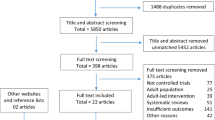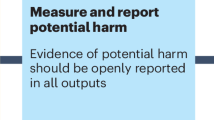Abstract
The HEALTHY study was a multi-site randomized trial designed to determine whether a 3-year school-based intervention targeting nutrition and physical activity behaviors could effectively reduce risk factors associated with type 2 diabetes in middle school children. Pilot and formative studies were conducted to inform the development of the intervention components and the process evaluation methods for the main trial. During the main trial, both qualitative and quantitative assessments monitored the fidelity of the intervention and motivated modifications to improve intervention delivery. Structured observations of physical education classes, total school food environments, classroom-based educational modules, and communications and promotional campaigns provided verification that the intervention was delivered as intended. Interviews and focus groups yielded a multidimensional assessment of how the intervention was delivered and received, as well as identifying the barriers to and facilitators of the intervention across and within participating schools. Interim summaries of process evaluation data were presented to the study group as a means of ensuring standardization and quality of the intervention across the seven participating centers. Process evaluation methods and procedures documented the fidelity with which the HEALTHY study was implemented across 21 intervention schools and identified ways in which the intervention delivery might be enhanced throughout the study.
This is a preview of subscription content, access via your institution
Access options
Subscribe to this journal
Receive 12 print issues and online access
$259.00 per year
only $21.58 per issue
Buy this article
- Purchase on Springer Link
- Instant access to full article PDF
Prices may be subject to local taxes which are calculated during checkout
Similar content being viewed by others
References
The HEALTHY Study Group. HEALTHY study rationale, design and methods: moderating risk of type 2 diabetes in multi-ethnic middle school students. Int J Obes 2009; 33 (Suppl 4): S4–S20.
Steckler A, Linnan L . Process Evaluations for Public Health Interventions and Research. Jossey-Bass: San Francisco, 2002.
Armstrong R, Waters E, Moore L, Riggs E, Cuervo LG, Lumbiganon P et al. Improving the reporting of public health intervention research: advancing TREND and CONSORT. J Public Health 2008; 30: 103–109.
Brown T, Summerbell C . Systematic review of school-based interventions that focus on changing dietary intake and physical activity levels to prevent childhood obesity: an update to the obesity guidance produced by the National Institute for Health and Clinical Excellence. Obes Rev 2008; 10: 110–141.
Saunders RP, Evans MH, Joshi P . Developing a process-evaluation plan for assessing health promotion program implementation: a how-to guide. Health Promot Pract 2005; 6: 134–147.
Bowes D, Marquis M, Young W, Holowaty P, Isaac W . Process evaluation of a school-based intervention to increase physical activity and reduce bullying. Health Promot Pract 2008. doi:10.1177/1524839907307886. Available on-line at http://hpp.sagepub.com/cgi/content/abstract/1524839907307886v1.
Feathers JT, Kieffer EC, Palmisano G, Anderson M, Janz N, Spencer MS et al. The development, implementation, and process evaluation of the REACH Detroit partnership's diabetes lifestyle intervention. Diabetes Educ 2007; 33: 509–520.
Sy A, Glanz K . Factors influencing teachers’ implementation of an innovative tobacco prevention curriculum for multiethnic youth: project SPLASH. J Sch Health 2008; 78: 264–273.
Young DR, Steckler A, Cohen S, Pratt C, Felton G, Moe SG et al. Process evaluation results from a school- and community-linked intervention: the Trial of Activity for Adolescent Girls (TAAG). Health Educ Res 2008; 23: 976–986.
Oakley A, Strange V, Bonell C, Allen E, Stephenson J . Process evaluation in randomised controlled trials of complex interventions. BMJ 2006; 332: 413–416.
McMurray RG, Bassin S, Jago R, Bruecker S, Moe EL, Murray T et al., for the HEALTHY Study Group. Rationale, design and methods of the HEALTHY study physical education intervention component. Int J Obes 2009; 33 (Suppl 4): S37–S43.
Gillis B, Mobley C, Stadler DD, Hartstein J, Virus A, Volpe SL et al., for the HEALTHY Study Group. Rationale, design and methods of the HEALTHY study nutrition intervention component. Int J Obes 2009; 33 (Suppl 4): S29–S36.
Venditti EM, Elliot DL, Faith MS, Firrell LS, Giles CM, Goldberg L et al., for the HEALTHY Study Group. Rationale, design and methods of the HEALTHY study behavior intervention component. Int J Obes 2009; 33 (Suppl 4): S44–S51.
DeBar LL, Schneider M, Ford EG, Hernandez AE, Showell B, Drews KL et al., for the HEALTHY Study Group. Social marketing-based communications to integrate and support the HEALTHY study intervention. Int J Obes 2009; 33 (Suppl 4): S52–S59.
Patton M . Qualitative Evaluation and Research Methods. Sage Publications: Newbury Park, CA, 1990.
Collingridge DS, Gantt EE . The quality of qualitative research. Am J Med Qual 2008; 23: 389–395.
Kitto SC, Chesters J, Grbich C . Quality in qualitative research. Med J Aust 2008; 188: 243–246.
Porter S . Validity, trustworthiness and rigour: reasserting realism in qualitative research. J Adv Nurs 2007; 60: 79–86.
Resnicow K, Davis M, Smith M, Yaroch AL, Baranowski T, Baranowski J et al., Wang OT How best to measure implementation of school health curricula: a comparison of three measures. Health Educ Res 1998; 13: 239–250.
McGraw SA, Sellers DE, Johnson CC, Stone EJ, Backman KJ, Bebchuk J et al. Using process data to explain outcomes. An illustration from the Child and Adolescent Trial for Cardiovascular Health (CATCH). Eval Rev 1996; 20: 291–312.
Acknowledgements
Past and present members of the Process Evaluation Committee are Allan Steckler (chair), Tom Baranowski, Stan Bassin, Steve Bruecker, Wendy Burd, Ashanti Canada, Lynn DeBar, Eileen Ford, Debby Ford, Stacy Grau, Natasha Greene, Will Hall, Joanne Harrell, Jill Hartstein, Art Hernandez, Katie Hindes, Ann Jessup, Sean Kolmer, Chung-Hui Lin, Mariam Missaghian, Griselle Montez, A. Gayle Moore, Mia Morris, Patricia Pearce, Trang Pham, Kimari Phillips, Amanda Phillips-Martinez, Leigh Rosen, Margaret Schneider, Sandy Sherman, Linda Simkin, Adriana Sleigh, Debbe Thompson, Victoria Thompson, Thang Trinh, Beth Venditti, Stella Volpe, Alyssa Voss, Maihan Vu, Lisa Wald, Alissa Wheeler, Mamie White and Abby Zeveloff. We certify that all applicable institutional and governmental regulations concerning the ethical use of human volunteers were followed during this research.
Author information
Authors and Affiliations
Consortia
Corresponding author
Rights and permissions
About this article
Cite this article
Schneider, M., Hall, W., Hernandez, A. et al. Rationale, design and methods for process evaluation in the HEALTHY study. Int J Obes 33 (Suppl 4), S60–S67 (2009). https://doi.org/10.1038/ijo.2009.118
Published:
Issue Date:
DOI: https://doi.org/10.1038/ijo.2009.118
Keywords
This article is cited by
-
Health equity in action: using community-engaged research to update an intervention promoting a healthy home food environment to Black/African American families
Cancer Causes & Control (2024)
-
Evaluating the Implementation of a Translational Peer-Delivered Stress Management Program for Spanish-Speaking Latina Breast Cancer Survivors
Journal of Cancer Education (2018)
-
Testing an Integrated Model of Program Implementation: the Food, Health & Choices School-Based Childhood Obesity Prevention Intervention Process Evaluation
Prevention Science (2017)
-
Characteristics of Teacher Training in School-Based Physical Education Interventions to Improve Fundamental Movement Skills and/or Physical Activity: A Systematic Review
Sports Medicine (2017)
-
Process evaluation design in a cluster randomised controlled childhood obesity prevention trial: the WAVES study
International Journal of Behavioral Nutrition and Physical Activity (2014)



